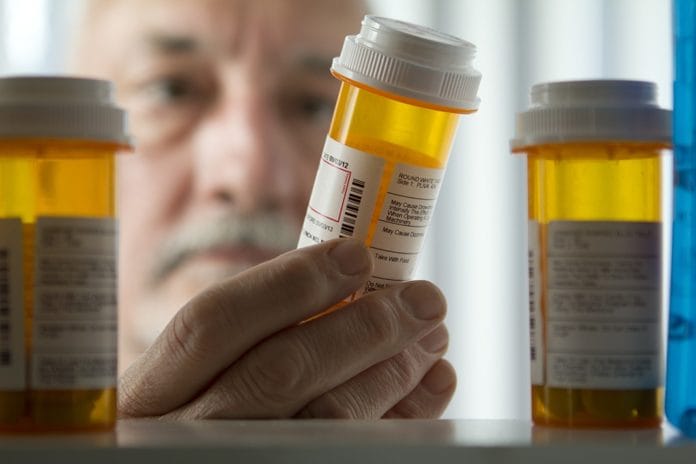Dental hygienists are acutely aware that the opioid crisis exists. However, we do not always put ourselves on the front lines of curbing dangerous practices that contribute to the misuse or unlawful distribution of these medicines.
Years ago, when I was a dental hygiene student, I remember throwing my back out of place. I was given two prescriptions − one for ibuprofen and one for Percocet. The injury occurred sometime during 2004 or 2005, coinciding with the dramatic rise in opioid abuse at the beginning of the century.1 I filled the prescription for the ibuprofen and secured the one for Percocet to my fridge with a magnet – just in case.
A week went by, and I healed. I forgot about the tiny slip of paper on my fridge next to photos of my cat and various receipts for things I’d purchased. One night, my boyfriend and I had some friends over for dinner. After the meal, one of our guests turned the conversation with the question, “I saw your bottle of pills in the bathroom and noticed the unfilled script on your fridge. Can I have it?”
I feel the shock and guilt of that evening even now − knowing how close I had come to being a direct part of the problem of someone’s opioid addiction. I realized then that my carefree attitude toward potentially dangerous medications was not going to be good enough personally or professionally. I felt very acutely that my home was no longer a safe space.
The danger of a piece of paper on my refrigerator, the temptation for others to pull back the door on my medicine cabinet, made it clear to me that doing nothing was not an option.
Unused Medications
What can be done from the operatory to make a difference in the fight against opioid abuse? A study from 2016 found that nearly 54% of opioids prescribed for dental-related pain remained unused after three weeks.2 That means more than half of the medication prescribed sits in someone’s bathroom cabinet, their kitchen drawer, or their purse.
Simply talking to patients about appropriate disposal options once they are no longer in need of the medication is a necessary part of dental patient education. Studies have shown that just by letting someone know the options regarding medication disposal increases planned compliance with disposal guidelines by 22%.2 That means taking just a few moments when handing a patient a prescription, or before a hygiene-to-treatment-chair handoff, can help break the chain of opioid misuse.
What Patients Need to Know About Disposal
Disposal of unused medication can be accomplished in a couple of ways. Some prescriptions should be immediately flushed down the toilet once they are no longer needed. The FDA has published a list of the medications that fall under this disposal category.3 When flushing is not advised, medications may be mixed with dirt, old coffee grounds, cat litter, or some other unpalatable substance and placed directly into the trash.
WalMart.com is the exclusive seller of a product called DisposeRx that consists of single-use packets that can be used prior to placing medications into the trash. For just over a dollar a packet, DisposeRx could even be kept in the dental office and given to patients along with their prescriptions to further promote the practice of not storing unused medications.
Many communities offer some type of medication take-back program for the discarding of unused prescriptions. Pharmacies such as CVS and Walgreens have disposal kiosks (they look like large mailboxes) into which patients can simply drop unused medications of all types.4,5
While dental hygienists currently hold limited prescriptive power (fluoride, CHX, etc.) in only five states (Oregon7, Colorado8, Montana6, New Mexico9, and Maine10), there is a continued need for a proactive approach whenever patients are undergoing treatment involving opioid analgesic medications. Leaving it up to the doctor or the pharmacists is not enough. These are our patients. They are also our family members and our friends. How can we possibly stay silent?
Before you leave, check out the Today’s RDH self-study CE courses. All courses are peer-reviewed and non-sponsored to focus solely on high-quality education. Click here now.
Listen to the Today’s RDH Dental Hygiene Podcast Below:
References
- Overdose death rates (NIDA). Retrieved from https://www.drugabuse.gov/related-topics/trends-statistics/overdose-death-rates
- Maughan, B.C., et al. (2016). Unused opioid analgesics and drug disposal following outpatient dental surgery: A randomized controlled trial. Drug and Alcohol Dependence. 168(11): 328-34. Retrieved from https://www.sciencedirect.com/science/article/pii/S0376871616302563
- Disposal of Unused Medications: What You Should Know. Retrieved from https://www.fda.gov/drugs/safe-disposal-medicines/disposal-unused-medicines-what-you-should-know
- Schoen, J.W., LaVito, A. (2018). You can get rid of your unused medications at these drugstores. Retrieved from https://www.cnbc.com/2018/04/23/cvs-and-walgreens-locations-where-you-can-dispose-of-medications.html
- Walgreens Newsroom. Retrieved from https://news.walgreens.com/press-releases/general-news/walgreens-to-provide-free-safe-medication-disposal-option-in-all-drugstores-in-2019.htm
- Functions for Dental Hygienists. Montana Secretary of State. Retrieved from http://www.mtrules.org/gateway/ruleno.asp?RN=24%2E138%2E407
- Oregon Board of Dentistry: Dental Hygiene. Oregon Secretary of State. Retrieved from https://secure.sos.state.or.us/oard/displayDivisionRules.action?selectedDivision=3693
- Dental Hygiene Prescribing: What You Need to Know. Colorado Dental Association. Retrieved from https://cdaonline.org/news/latest-news/dental-hygiene-prescribing-need-know/
- Advocacy. New Mexico Dental Hygienists’ Association. Retrieved from https://www.nmdha.org/legislative/statute_hb_187
- Maine Legislature. Retrieved from https://custom.statenet.com/public/resources.cgi?id=ID:bill:ME2015000H74&ciq=sydneharwick&client_md=a409891dc911632369fe377459d10c0f&mode=current_text












